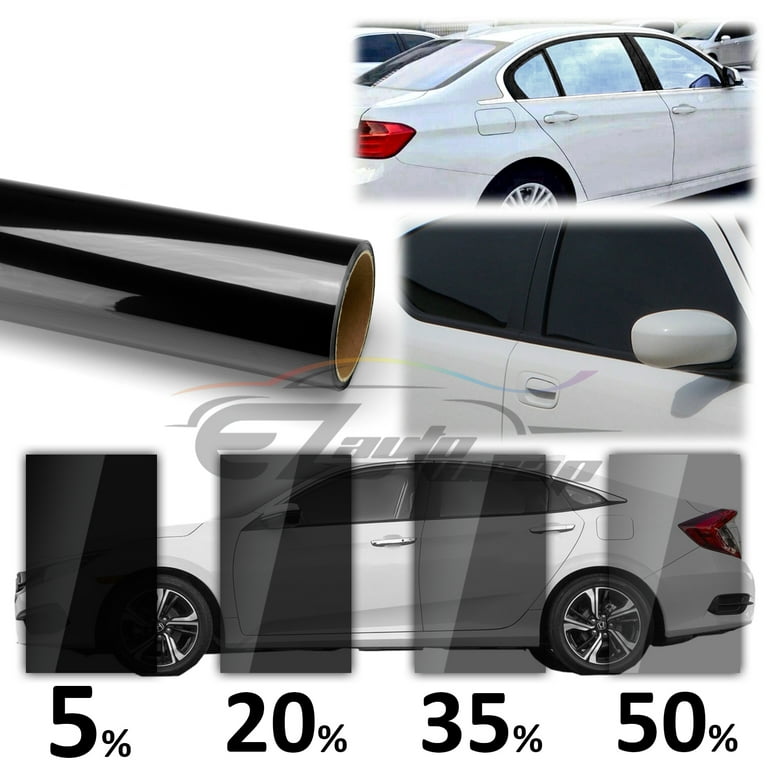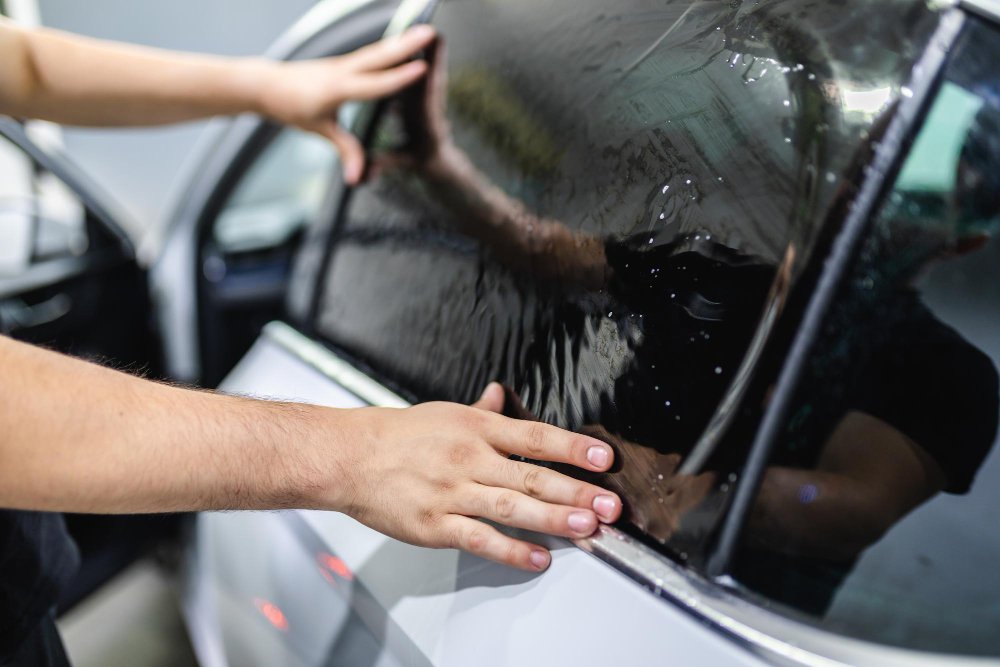Automobile Window Tinting: Tips for Keeping a Professional Complete
Automobile Window Tinting: Tips for Keeping a Professional Complete
Blog Article
Home Window Tinting Regulations and Standards: What You Need to Know Prior To Tinting Your Vehicle
Before waging home window tinting for your car, it is important to acquaint on your own with the varied laws and guidelines that control this method throughout various states. These guidelines dictate the acceptable degrees of color darkness, usually measured by visible light transmission (VLT) portions, and include specific terms for front windscreens focused on making certain roadway safety. In addition, specific territories might offer clinical exceptions for people with qualifying conditions. Comprehending these intricacies can save you from prospective lawful ramifications, but what are the details rules in your state?
Introduction of Home Window Tinting Regulations
Home window tinting legislations are often based on variation throughout different jurisdictions, reflecting regional regulations and safety considerations. These regulations dictate the permissible degrees of color darkness and reflectiveness on car windows, making sure that chauffeurs maintain ample presence while likewise shielding versus dangerous UV rays and warmth.
Many guidelines categorize window tinting based upon the Visible Light Transmission (VLT) portion, which indicates the amount of light that can pass with the home window. Usually, lower VLT percentages represent darker tints. Regulations typically differentiate between the front, side, and rear home windows, with more stringent restrictions put on the front windshield to boost safety for both the motorist and various other road individuals.
Additionally, some territories impose limitations on the reflectivity of the tint, protecting against excessive glow that might hinder visibility. Exemptions to these legislations may exist for individuals with specific clinical conditions requiring additional sunlight defense. Conformity with window tinting guidelines is vital, as offenses can lead to fines, mandatory elimination of the color, and prospective increases in insurance costs. It is necessary for automobile owners to acquaint themselves with local regulations before continuing with window tinting setups.
State-by-State Tint Laws
Recognizing the details home window tinting guidelines in each state is crucial for lorry proprietors seeking to follow the regulation. Each state in the U.S. has actually developed its own collection of regulations regulating home window tinting, which can vary considerably. These laws often dictate the allowable levels of tint darkness, the sorts of home windows that can be tinted, and any kind of medical exceptions that might use.
As an example, states like California have stringent restrictions on color darkness for front home windows, while others, such as New Mexico, might enable darker tints. In addition, certain states mandate specific visibility percentages for different windows, consisting of the windshield, front side home windows, and back windows. It is crucial for car owners to acquaint themselves with their state's legislations to avoid possible penalties or penalties.
In addition, some states might require a qualification sticker to be positioned on colored home windows, suggesting conformity with state laws. Failure to comply with these guidelines not only takes the chance of legal repercussions however can additionally impact safety and security and exposure while driving. Vehicle proprietors ought to carry out complete research or speak with neighborhood authorities to guarantee complete understanding and compliance with state-by-state tint guidelines.
Allowed Color Degrees and Kinds
Several lorry proprietors might be shocked to learn that allowed tint levels and kinds vary extensively across various states. Each state has actually developed its own regulations regarding the allowable darkness and reflectivity of window read more color, typically measured by Visible Light Transmission (VLT) percentages. VLT describes the amount of light that can travel through the tinted windows; hence, a reduced percent shows a darker tint.

Additionally, the kinds of tint materials permitted can differ, with some states prohibiting metallic or mirror-like finishes. It is crucial for automobile proprietors to familiarize themselves with their state's particular legislations to ensure compliance. Non-compliance can lead to penalties, necessary removal of the color, or various other legal consequences, making it important to recognize these guidelines before proceeding with setup.
Medical Exceptions for Tinting
While not all states supply allocations for medical exemptions pertaining to home window tinting, those that do identify the need for certain people to improve visibility and convenience because of medical conditions. Various clinical conditions, such as lupus, skin cancer, and certain eye problems, can provide individuals particularly delicate to sunlight. As a result, these individuals might require darker tints to secure themselves from harmful UV rays and glare.

It is essential to note that despite having a medical exception, there may still be limitations on the degree of color permitted. Compliance with state laws makes sure that individuals are both protected and within lawful limitations. Those thinking about get more medical exceptions ought to call their regional Division of Motor Autos or equivalent authority to comprehend the demands and procedures needed to apply for an exception properly.
Penalties for Non-Compliance
Falling short to adhere to home window tinting legislations can cause significant fines, which differ by state. Law enforcement firms are empowered to provide citations for cars that do not comply with the defined tinting policies. These charges generally consist of penalties, which can range from modest amounts to several hundred bucks, depending on the seriousness of the infraction and the state concerned.
In some jurisdictions, duplicated offenses may cause escalating fines or added charges, such as mandatory court appearances. Non-compliance may necessitate the removal of unlawful tinting, often at the owner's cost. In severe instances, regular culprits might encounter suspension of their automobile enrollment till conformity is attained.
Furthermore, insurance policy effects might arise from getting numerous citations for window tint offenses. Insurance providers might view such violations as an indicator of riskier actions, possibly resulting in boosted premiums or difficulty in protection.
To stay clear of these fines, it is essential for automobile owners to acquaint themselves with their neighborhood home window tinting laws and make sure that their lorry complies (Window Tinting). This positive strategy not just you can check here avoids lawful ramifications but additionally promotes road safety
Verdict

Many guidelines categorize window tinting based on the Visible Light Transmission (VLT) percent, which suggests the quantity of light that can pass via the home window. Conformity with window tinting laws is critical, as offenses can result in penalties, mandatory elimination of the color, and potential increases in insurance policy premiums.Comprehending the specific window tinting laws in each state is important for car owners seeking to comply with the regulation. These guidelines typically determine the permitted levels of tint darkness, the kinds of home windows that can be tinted, and any kind of medical exceptions that might apply.
For circumstances, states like The golden state have strict constraints on color darkness for front windows, while others, such as New Mexico, may permit darker colors.
Report this page